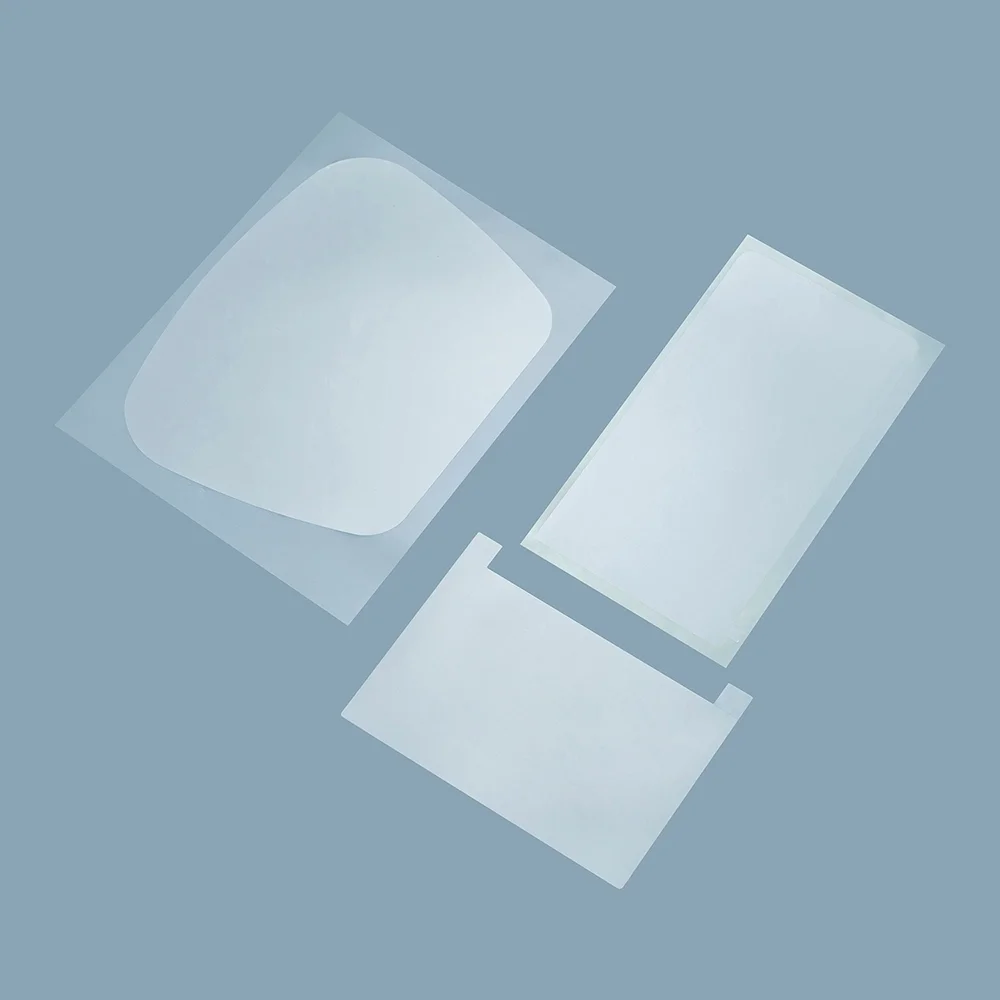In modern manufacturing, the need for clean, durable, and flexible bonding solutions has never been greater. Among the many adhesive technologies available, polyurethane adhesive film stands out as a leading choice. Unlike liquid adhesives, it offers a solid, thermoplastic form that can be cut, positioned, and activated under heat and pressure. This makes it not only versatile but also reliable for industrial-scale production. This article PeiYang will focus on two major aspects of polyurethane adhesive film: its performance characteristics and its processing and application methods. By understanding these dimensions, manufacturers, engineers, and product developers can unlock the full potential of this advanced adhesive solution.

Performance Characteristics of Polyurethane Adhesive Film
1. Mechanical Strength and Flexibility
One of the defining features of polyurethane adhesive film is its balance between tensile strength and flexibility. Unlike brittle adhesives that may crack under repeated stress, polyurethane films absorb vibrations and mechanical impacts. This property allows them to perform exceptionally in environments where bonded parts undergo frequent bending, stretching, or pressure.
-
High tensile strength: Ensures bonds remain intact under load.
-
Elongation capacity: Supports dynamic movements without delamination.
-
Vibration absorption: Reduces fatigue in bonded assemblies.
This combination of toughness and flexibility makes the film suitable for products that demand both structural stability and comfort.
2. Thermal Resistance
Polyurethane adhesive film performs reliably under fluctuating temperatures. Certain grades can withstand activation at temperatures up to 150°C, while maintaining bond stability across long-term exposure to heat or cold.
-
Heat stability: Bonds resist softening or deformation under high operating temperatures.
-
Cold flexibility: Films remain pliable at low temperatures, avoiding brittleness.
-
Thermal cycling endurance: Maintains adhesion through repeated heating and cooling cycles.
For industries where products face extreme climates or regular temperature shifts, this characteristic ensures durability and longevity.
3. Moisture and Chemical Resistance
Environmental exposure often compromises adhesives, but polyurethane adhesive film is engineered to resist such conditions.
-
Moisture resistance: Prevents weakening of bonds in humid or wet environments.
-
Chemical resistance: Withstands contact with oils, solvents, and cleaning agents.
-
Hydrolysis stability: Retains adhesive integrity even in prolonged damp exposure.
This resilience makes polyurethane adhesive film an ideal choice where longevity and reliability are crucial.
4. Transparency and Aesthetic Value
Polyurethane adhesive film is often manufactured in highly transparent grades, allowing invisible bonding lines. This is particularly beneficial in applications where design and aesthetics are critical.
-
Optical clarity: Ensures visual appeal when joining transparent or light-colored materials.
-
Non-yellowing property: Maintains a clean, clear look over time.
-
Surface smoothness: Creates seamless finishes without irregular glue marks.
Transparency enhances the professional quality of finished products, aligning with modern design expectations.
5. Lightweight and Eco-Conscious Properties
Another advantage of polyurethane adhesive film is its contribution to weight reduction and environmental sustainability. By replacing traditional fasteners such as screws or rivets, adhesive films reduce the overall weight of assemblies. Additionally, many formulations are solvent-free, eliminating volatile organic compounds (VOCs) and contributing to cleaner manufacturing.
-
Weight reduction: Supports industries seeking efficiency and fuel savings.
-
VOC-free production: Improves workplace safety and environmental compliance.
-
Recyclable potential: Certain grades are compatible with recycling streams, promoting circular economy practices.
Processing Methods of Polyurethane Adhesive Film
1. Heat Pressing
The most common method of applying polyurethane adhesive film is heat pressing. In this process, the film is placed between two substrates, and heat along with pressure is applied using a press machine.
-
Advantages: Precise bonding, controlled thickness, and uniform adhesion.
-
Applications: Widely used for textiles, laminates, and composite materials.
-
Customization: Settings can be fine-tuned based on the film’s melting temperature and thickness.
Heat pressing ensures a strong, consistent bond with minimal waste.
2. Lamination
In large-scale production, lamination is a continuous method of bonding layers using rollers and heated plates. The adhesive film is sandwiched between materials and activated as the assembly passes through a laminating line.
-
High efficiency: Supports automated manufacturing at high speeds.
-
Scalability: Suitable for wide rolls and large surfaces.
-
Uniform bonding: Prevents uneven adhesion and air entrapment.
This method is favored in industries where large quantities of bonded materials are required without compromising quality.
3. Vacuum Pressing
For three-dimensional or irregular surfaces, vacuum pressing provides superior conformity. The process involves heating the polyurethane adhesive film while a vacuum removes air between the substrates and the film, ensuring complete contact.
-
Perfect surface coverage: Adapts to curved and textured substrates.
-
No bubbles or voids: Vacuum removes trapped air during bonding.
-
Enhanced aesthetics: Produces smooth finishes on complex shapes.
This makes vacuum pressing ideal for components with challenging geometries.
4. Die-Cutting and Pre-Forming
Polyurethane adhesive film can be pre-cut into precise shapes using die-cutting or laser cutting. Manufacturers benefit from reduced waste, easier handling, and faster production cycles.
-
Precision bonding: Pre-cut films fit exactly onto substrates.
-
Ease of use: Eliminates manual trimming after bonding.
-
Consistency: Every piece meets uniform dimensional standards.
Die-cutting enhances process efficiency and ensures reliable results across batches.
The strength of polyurethane adhesive film lies in its dual advantages: outstanding performance characteristics and processing versatility. Its ability to combine mechanical strength, flexibility, thermal stability, moisture resistance, and aesthetic transparency makes it an indispensable material across industries. At the same time, its compatibility with diverse processing methods—from heat pressing and lamination to vacuum pressing and automation—ensures it can meet the demands of modern manufacturing. For companies aiming to enhance product quality, streamline production, and adopt cleaner, more sustainable bonding technologies, polyurethane adhesive film is not just an adhesive—it is a performance enabler.
https://www.opticaladhesives.com/PU-Adhesives-Protection-film
www.opticaladhesives.com
Suzhou PeiYang New Material Technology Co. Ltd

